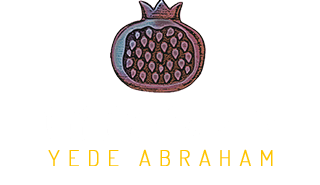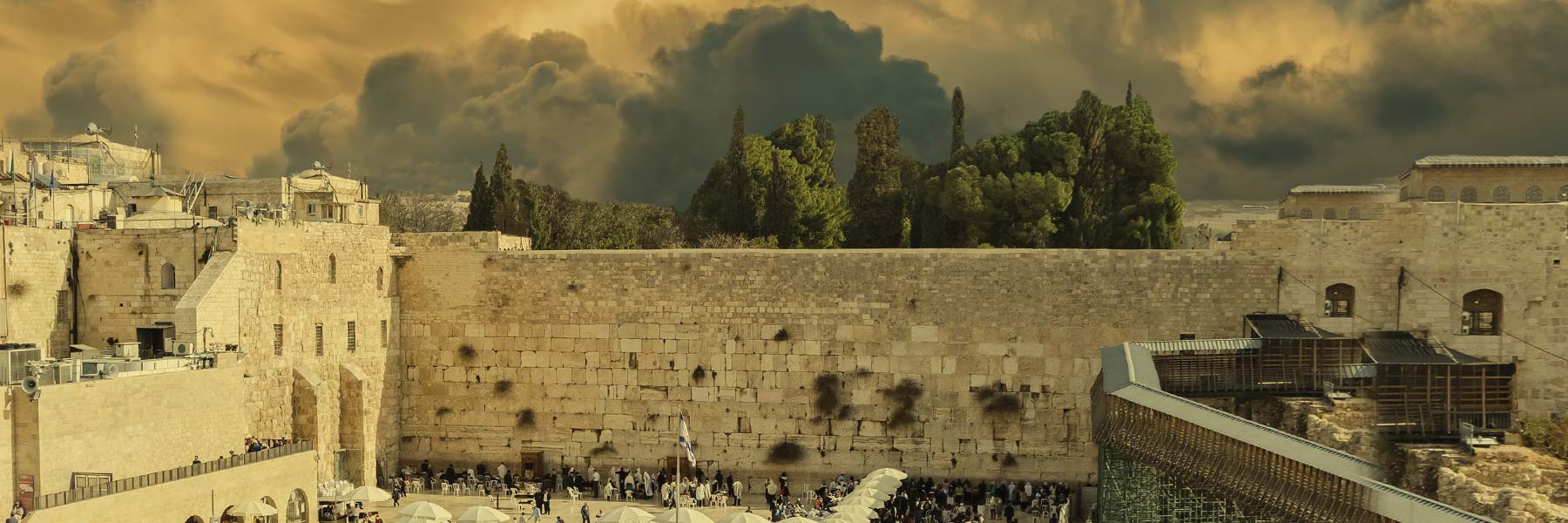Adar – אדר
SHABBAT ZAKHOR
Sifre Torah cloaks are festive.
Minhah Friday Afternoon
- regular.
Arbit
- After Minhah give Mitzvot for the Zemirot and Haftarah.
- Kabbalat Shabbat is regular including Bame Madlikin.
- The Kaddish after “Amar Ribi El’azar” is recited by the Abel.
- The Kaddish, in Purim melody, is introduced from “Lebetekha.”
- The Yigdal melody is festive.
Shabbat Morning
- Zemiroth are started with “Tehilat” in a festive melody.
- “Amonai Melekh” is chanted in a festive melody also.
- If the minyan is late, introduce the Kaddish with “Ribi Hananiah Ben ‘Akashia…” after the “Great Hallel” (Hodu Le’el Hashamayim Ki le’olam Hasdo).
- In the middle of Nishmat we insert the Piyut of Mi Khamokha on p.368.
- The kaddish in Purim melody is introduced from “Haboher Beshire.”
- In Hazarah, Kedushah is in festive melody.
- Kaddish Titkabbal after the Hazarah.
- Sefer Torah
- Two Sifre Torahs
- a- Tetsaveh (A,B,C,E,G) or Terumah (F) or Tsav or Vayikra (H,J,N,I,M)
- b- Zakhor
- Kaddish after each Sefer Torah
- While the 2nd Sefer Torah is placed on the reader’s desk and while the 1st one is removed we sing “Elokim Tseba’ot.”
- Haftarat Zakhor.
Mussaf
- En Kelohenu to the Purim melody and Adon ‘Olam melody is festive.
Minhah
- No perpetual Hashkabot, no Tsidkatekha, no Pessukim.
Arbit Motsa’e Shabbat
- Regular including “Shuba ‘Ad Matai.”
FAST OF ESTHER
Arbit
- Regular
Shahrit
Regular until the Amidah.
- In the Amidah we include ‘Anenu in the Shema Kolenu.
- In the Hazarah the Hazzan includes ‘Anenu between Reeh and Refaenu.
- After the Hazarah we follow the prayer in the fast books for Ta’anit Esther on page 98. We chant “Yehorim kamu bekhol dor” and “Ekh Zarim Akhzarim.”
- Sefer Torah
- From Parahsat Ki Tissah, “Vayehal Moshe” for the Cohen.
- For the Levi and Yisrael we start from “Pessol Lekha.”
- New York: The Kahal first chant the Shelosh Esre Middot then the Hazzan repeats them.
- The kaddish after Torah reading.
- Ashre when the Torah is taken from the reading table.
- Ya’ankha Beyom Tsara, Uba Letsion and, Kaddish Titkabbal.
- The Sefer Torah is held standing on the Reader’s desk during the Kaddish Titkabbal.
- The Torah is return while chanting Yehallelu.
- After Shuba, the Hazzan starts Psalm 22, “Lamnatseyah Al Ayelet HaShahar.” Followed by Kaddish Yehe Shelamah.
- We recite Kaveh, en Kelohenu, Tena debe Eliyahu, Kaddish Al Yisrael, Barkhu and Alenu.
- Pesukim if needed for an extra Kaddish.
Minhah for Fast day
- We wear Tallit and Tephillin.
- We start Minhah with Shema Koli, except on Eve of Purim.
- We say the Pitum haketoret except on Eve of Purim.
- After Ashre, Kaddish, El Erekh appayim (except on eve of Purim).
- Sefer Torah
- From Parahsat Ki Tissah, “Vayehal Moshe” for the Cohen.
- For the Levi and Yisrael we start from “Pessol Lekha.”
- New York: The Kahal first chant the Shelosh Esre Middot then the Hazzan repeats them.
- NO KADDISH after the Torah on Minhah.
- While the Sefer Torah is taken from the reader’s desk we chant psalm 20, Ya’ankha beYom Tsarah.
- We return the Sefer Torah, immediately, without holding it standing on the Tebah while we chant Yehallelu.
- At the Hekhal we start Shubah and then Kaddish.
- Amidah then the Hazarah are recited as in shahrit.
- We continue in the Book for Fast days on page 82.
- If it is eve of Purim we skip all the Tahanunim.
PURIM
Arbit
- If it is Motsa’e Shabbat we start from psalm 144, LeDavid Barukh and Lamnatseyah Bighninot.
- The Hazzan starts on page 382 with psalm 22, Al Ayelet Hashahar.
- We continue with Vehu rahum as on daily Arbit.
- The rest is regular until the Amidah.
- Before the Amidah announce: Omerim Al Hanissim.
- After the Amidah, Yehi Shem and Kaddish Le’elah.
- Reading of the Megillah
- It is not our custom to make noises during the reading of the Megillah, except that we stamp the floor with our feet.
- The Hazzan then spreads the Megillah to look like an Iggeret. A Segan will stand at each side of the desk.
- After the three Berakhot he reads the Megilah. The congregation stands for the Berakhot, then sits down for the Megillah.
- The four times that the Kahal first reads the verses are:
- Ish Yehudi Haya Beshushan Habirah…
- Balaylah Hahu Nadeda Shenat Hamelekh…
- Umordekhay Yatsa Milifne Hamelekh… and Ish Yehudi…
- Ki Mordekhay Hayehudi… we then Repeat Ish Yehudi…
- For the melody:
- Hazan Rabbi Ira Rohde, all chapters, Shearith Israel (NY)
- Hazan Daniel Halfon chants Megillat Esther, divided into the chapters. Here are the first four:
- At the conclusion of the Megillah we recite the final Berakha responsively.
- We first roll back the Megillah then we recite Ve’Ata Kaddosh.
- Then Kaddish Titkabbal, Psalm 124, Lule Shahaya Lanu, Kaddish Yehe Shelama, Barekhu and Alenu.
- If is Motsae Shabbat, after the Megillah we recite first Shuba, then Ve’Ata Kaddosh, then Kaddish Titkabbal, Habdalah, then Psalm 124, Lule Shehaya Lanu, Kaddish Yehe Shelama, Barekhu and Alenu.
- At the Conclusion we announce: Services tomorrow morning will commence at 7AM (for a weekday) or 8AM (on Sunday).
Shahrit on Purim Morning
- Regular as on week days until the Amidah.
- At the Amidah and Hazarah we add Al Hanissim.
- After the Hazarah the Hazzan recites Kaddish Le’ela.
- Sefer Torah for Purim
- Parashat Beshalah for three persons
- Repeat the last Passuk.
- After the Torah the Hazzan recites Kaddish Le’ela,
- While the Sefer Torah is removed we chant Ashre.
- Reading of the Megillah
- The Hazzan then spreads the Megillah to look like an Iggeret. A Segan will stand at each side of the desk.
- After the two Berakhot he reads the Megillah. The congregation stands for the Berakhot, then sits down for the Megilah.
- The four times that the Kahal first reads the verses are:
- Ish Yehudi Haya Beshushan Habirah…
- Balaylah Hahu Nadeda Shenat Hamelekh…
- Umordekhay Yatsa Milifne Hamelekh… and Ish Yehudi…
- Ki Mordekhay Hayehudi… we then Repeat Ish Yehudi…
- At the conclusion of the Megillah we recite the final Berakha responsively.
- We first roll back the Megillah then we recite Uba Letsion.
- Then the Hazzan recites the Kaddish Titkabbal.
- The Sefer Torah is returned while chanting Yehallelu.
- The Hazzan then starts psalm 22, Al Ayelet Hashahar.
- Kaddish Yehe Shelama.
- Kaveh, then En Kelohenu to the special Purim tune.
- Kaddish Al Yisrael, Barekhu, Alenu.
- Adon Olam to the tune of …
Minhah for Purim
- Regular without Pitun Haketoret.
- The Amidah includes Al Hanissim.
- Instead of Lamnatseyah Bigninot we say psalm 124, Lule Amonai.
PURIM SHUSHAN
Arbit for Purim Shushan
- Regular until after Kaddish Titkabbal.
- We recite psalm 124, “Lule Amonai Shahaya Lanu” instead of psalm 121.
- the rest is regular.
Shahrit for Purim Shushan
- Regular until after the Hazarah of the Amidah.
- No Tahannunim.
- After Kaddish Titkabbal we recite Psalm 22, Al Ayelet Hashahar. Followed by Kaddish Yehe Shelamah Rabbah.
- The rest is regular.
Minhah for Purim Shushan
- Regular, no Pitum Haketotret and no Tahanunim.
- Instead of Psalm 67, we recite psalm 124, Lule Amonai.
SHABBAT PARAH
Sifre Torah cloaks are festive because of Shabbat Parah.
Minhah Friday Afternoon
- regular.
Arbit
- After Minhah give Mitzvot for the Zemirot and Haftarah.
- Kabbalat Shabbat is regular including Bame Madlikin.
- The Kaddish after “Amar Ribi El’azar” is recited by the Abel.
- The Kaddish, in festive melody, is introduced from “Lebetekha.”
- The Yigdal melody is festive.
Shabbat Morning
- Zemiroth are started with “Tehilat” in a festive melody.
- “Amonai Melekh” is chanted in a festive melody also.
- If the minyan is late, introduce the Kaddish with “Ribi Hananiah Ben ‘Akashia…” after the “Great Hallel” (Hodu Le’el Hashamayim Ki le’olam Hasdo).
- Kaddish in festive melody introduced from “Haboher Beshire.”
- In Hazarah, Kedushah is in festive melody.
- Kaddish Titkabbal after the Hazarah.
- Sefer Torah
- 2 Sifre Torahs
- a- Mishpatim (A,B,C,E,G) or Vayak’hel (F) or Pekudeh (H,J,N,I,M), or Vayak’hel-Pekudeh (D,K,L)
- b- Parah
- Kaddish after second Sefer Torah
- While the 2nd Sefer Torah is placed on the reader’s desk and while the 1st one is removed we sing “Elokim Tseba’ot.”
- 2 Sifre Torahs
- Haftarat Parah.
Mussaf
- En Kelohenu and Adon ‘Olam melodies’ are festive.
Minhah
- No perpetual Hashkabot, no Tsidkatekha, no Pessukim.
Arbit Motsa’e Shabbat
- Regular including “Shuba ‘Ad Matai.”
SHABBAT HAHODESH
(Sifre Torah cloaks are festive whether Rosh Hodesh or not.)
Minhah Friday Afternoon
- Regular.
Arbit
- After Minhah give Mitzvot for the Zemirot and Haftarah (and Haschabot, if Rosh Hodesh)
- Kabbalat Shabbat is regular including Bame Madlikin.
- The Kaddish after “Amar Ribi El’azar” is recited by the Abel.
- The Kaddish, in festive melody, is introduced from “Lebetekha.”
- If Rosh Hodesh, before the Amida, announce “Omerim Ya’aleh Veyabo.”
- The Yigdal melody is festive.
Shabbat Morning
- If Rosh Hodesh, Hashcabot are recited by the Hazzan half an hour before services or earlier if needed.
- Zemiroth are started with “Tehilat” in a festive melody.
- “Amonai Melekh” is chanted in a festive melody also.
- If the minyan is late, introduce the Kaddish with “Ribi Hananiah Ben ‘Akashia…” after the “Great Hallel” (Hodu Le’el Hashamayim Ki le’olam Hasdo).
- Kaddish in festive melody introduced from “Haboher Beshire.”
- If Rosh Hodesh, in Amidah and Hazarah add “Ya’ale Veyabo.”
- In Hazarah, Kedushah is in festive melody.
- If Rosh Hodesh, immediately after the Hazarah, the Hatsi Hallel is sung, introduced with “Likro Et Hahallel.”
- Kaddish Titkabbal after the Hallel.
- Sefer Torah
-
If Rosh Hodesh:
- Three Sifre Torah:
- a- Vayikrah (6th & 7th combined become Samukh) (D, K,L)
- b- Rosh Hodesh (Mashlim)
- c- Hahodesh (Maftir)
- No interruption after 1st Sefer Torah.
- Kaddish after 2nd Sefer Torah.
- While 3rd Sefer Torah is placed on the reader’s desk and while the 1st and 2nd are removed we sing “Elokim Tseba’ot.”
- Kaddish after 3rd Sefer Torah and “En Ka’el Yeshurun” while the 3rd sefer torah is removed.
- Haftarat Hahodesh and 1st & last Pesukim of Haftarat Rosh Hodesh are recited.
- Three Sifre Torah:
-
If not Rosh Hodesh
- 2 Sifre Torah
- a- V.P. (A,B,C,E,G) or Pekudeh (F) or Shemini (H,J,N) or Tazria (I,M)
- b- Hahodesh
- Kaddish after each Sefer Torah
- While the 2nd Sefer Torah is placed on the reader’s desk and while the 1st one is removed we sing “Elokim Tseba’ot.”
- Haftarat Hahodesh and if needed, lst and last Pesukim of Mahar Hodesh.
- 2 Sifre Torah
Mussaf
- Mussaf of Shabbat Rosh Hodesh (if Rosh Hodesh).
- En Kelohenu and Adon ‘Olam melodies’ are festive.
Minhah
- If Rosh Hodesh, in Amidah add “Ya’ale Veyabo.”
- If Rosh Hodesh, no perpetual Hashkabot, no Tsidkatekha, no Pessukim.
Arbit Motsa’e Shabbat
- If Rosh Hodesh (B,F,I) we add Psalm 104 Barekhi Nafshi.
- Regular including “Shuba ‘Ad Matai.”

